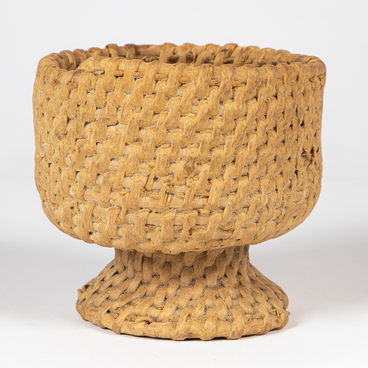On the second floor of the economic part of Melkin’s house, where the Sheltozero Veps Ethnographic Museum is located today, a berry picker is displayed. The object was donated to the museum by Oleg Valentinovich Lonin, a native Veps of the village of Rybreka.
“Grabilka” (picker) literally translates from the Vepsian language as “bear’s paw”. The Veps were famous not only for their mentality — an unusual blend of Orthodoxy and paganism — but also for their incredibly close connection with nature. Traditionally, the Veps believed in the spirits of the forest and water and considered them living beings who should be addressed as a person. Therefore, there were special rules for farm management. For example, the forest was cut down only in winter, when the trees were asleep. Before cutting down a tree, a woodcutter had to ask permission, “I want to build a house, I ask permission to use you.” The felled trees were not used for 40 days, as the Veps believed that trees, like people, have a soul that stays close all this time.
In the land of forests, swamps, rivers and lakes, berries and mushrooms were the main delicacy. The Veps fed on the forest and the lake. Picking berries in a bearish way, that is, raking a handful of berries at once, helped speed up the process. Delicate use of the pickers allowed for careful management of the berry lands. In order not to harm the plant, the “claws” were run through the twigs of a bush near the ground and slightly shaken, so that the berries fell off, and the leaves remained intact. Among other things, it was important not to offend the spirit of the forest (mecižand), otherwise one could lose their forest gifts, or even meet their death. Therefore, the Veps tried to behave modestly in the forest: they did not take too much, they did not break branches.
The availability and beneficial properties of
Karelian berries provided this forest delicacy with a place in the Karelian
diet. Berries were used for medicinal purposes, to make berry starch drinks
(kissels), fillings for pastries, or they simply were a treat for tea. For
example, the collected cloudberries were stored soaked and eaten with milk,
while from blueberries unmarried girls cooked juuppo — a berry treat with the
addition of rye flour.


